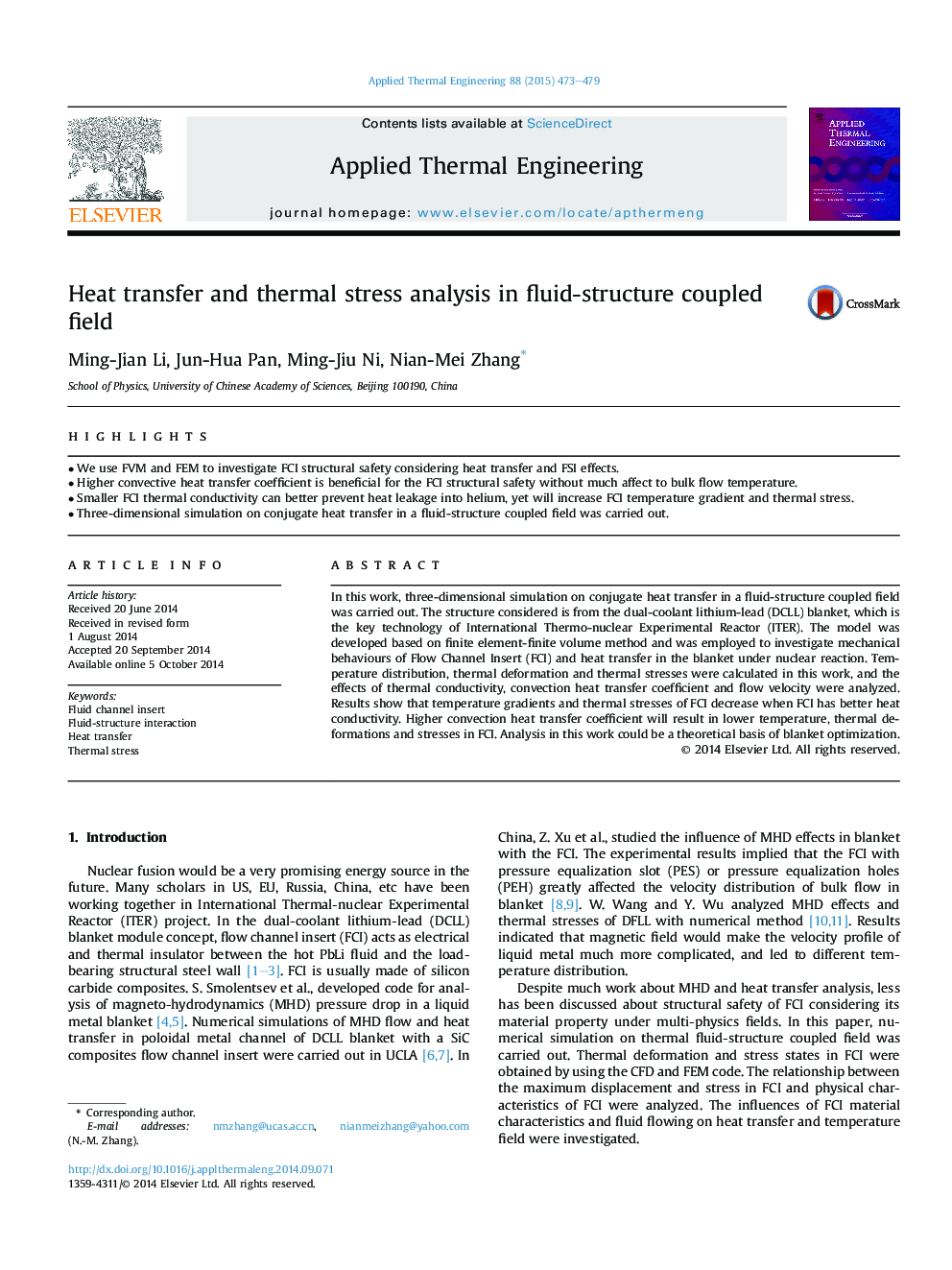| Article ID | Journal | Published Year | Pages | File Type |
|---|---|---|---|---|
| 645336 | Applied Thermal Engineering | 2015 | 7 Pages |
•We use FVM and FEM to investigate FCI structural safety considering heat transfer and FSI effects.•Higher convective heat transfer coefficient is beneficial for the FCI structural safety without much affect to bulk flow temperature.•Smaller FCI thermal conductivity can better prevent heat leakage into helium, yet will increase FCI temperature gradient and thermal stress.•Three-dimensional simulation on conjugate heat transfer in a fluid-structure coupled field was carried out.
In this work, three-dimensional simulation on conjugate heat transfer in a fluid-structure coupled field was carried out. The structure considered is from the dual-coolant lithium-lead (DCLL) blanket, which is the key technology of International Thermo-nuclear Experimental Reactor (ITER). The model was developed based on finite element-finite volume method and was employed to investigate mechanical behaviours of Flow Channel Insert (FCI) and heat transfer in the blanket under nuclear reaction. Temperature distribution, thermal deformation and thermal stresses were calculated in this work, and the effects of thermal conductivity, convection heat transfer coefficient and flow velocity were analyzed. Results show that temperature gradients and thermal stresses of FCI decrease when FCI has better heat conductivity. Higher convection heat transfer coefficient will result in lower temperature, thermal deformations and stresses in FCI. Analysis in this work could be a theoretical basis of blanket optimization.
